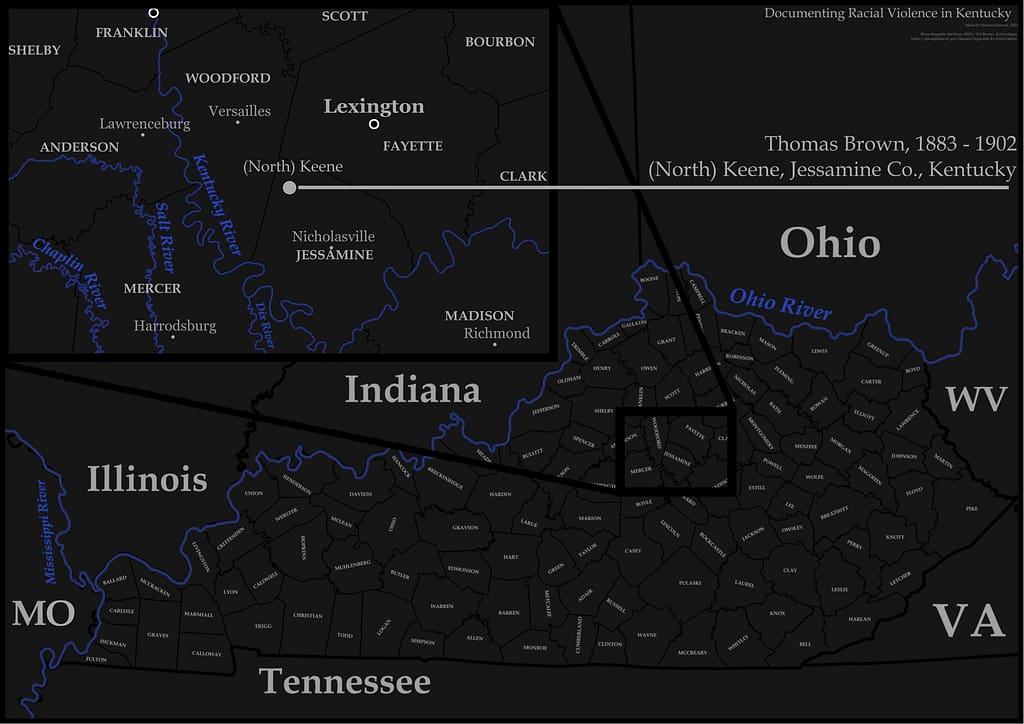
Thomas Brown was a 19-year-old young man. He was born in Kentucky in February 1883. His parents were John Brown and Bell Brown, who in 1902 were 37 years old and had been married for seventeen years. Thomas Brown also had one sibling, George Brown, who was 17 at the time of Thomas’s death. Thomas’s brother George could read and write, and by the age of 15 had attended school for three years. Brown held the occupation of a farm laborer, and he also read and write. The Brown family resided in North Keene, Jessamine County, Kentucky. Jessamine County is a county that is located in central Kentucky, south of Fayette County. Living with the Brown family was a border named William Craig, a farm laborer that could not read or write. The Brown family lived in a predominantly white neighborhood in a home, which they rented.
On February 6th, 1902, Thomas Brown was accused of assaulting Della Brown, a 15-year-old white girl, on her way home from school. Della Powell was the daughter of a wealthy white merchant in Jessamine County, and her family was very well known in the area. Upon hearing of the incident, a mob of about 200 men formed, listening to Della’s description of the attack and who she believed to have attacked her. The information regarding Thomas Brown’s identification differs between different accounts, some saying he was located by bloodhounds, and others saying he was identified after being arrested. The identification was based solely on the account of the girl and was never truly confirmed. Thomas Brown was in the custody of police when he was seized by a mob, taken to the Nicholasville Courthouse, and lynched.
The lynching of Brown is another example of the role newspapers played in promoting and excusing extralegal violence. For example, the Mount Vernon Signal referred to Brown as a “brute” whose lynching might “deter them from committing such crimes.” The Hopkinsville Kentuckian reported that Brown was “hanging in a decent and orderly way in the courthouse yard.” The Lancaster Central Record described the lynching of Brown as a “prompt and just punishment,” and explained that a “crowd” hanged Brown, not a “mob,” because the newspaper deplored “mob violence.” Lexington Herald reported on its front page that a terrible crime had been committed, describing the alleged assault on Powell, not the lynching of Brown by a mob. Thus, newspaper accounts underscore that lynchings well-known to the public and media.
Location of the Lynching








